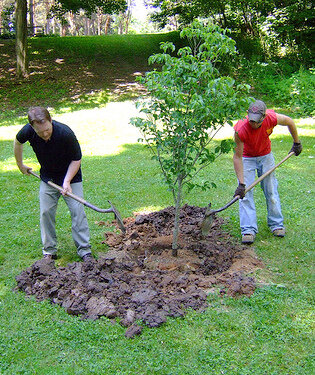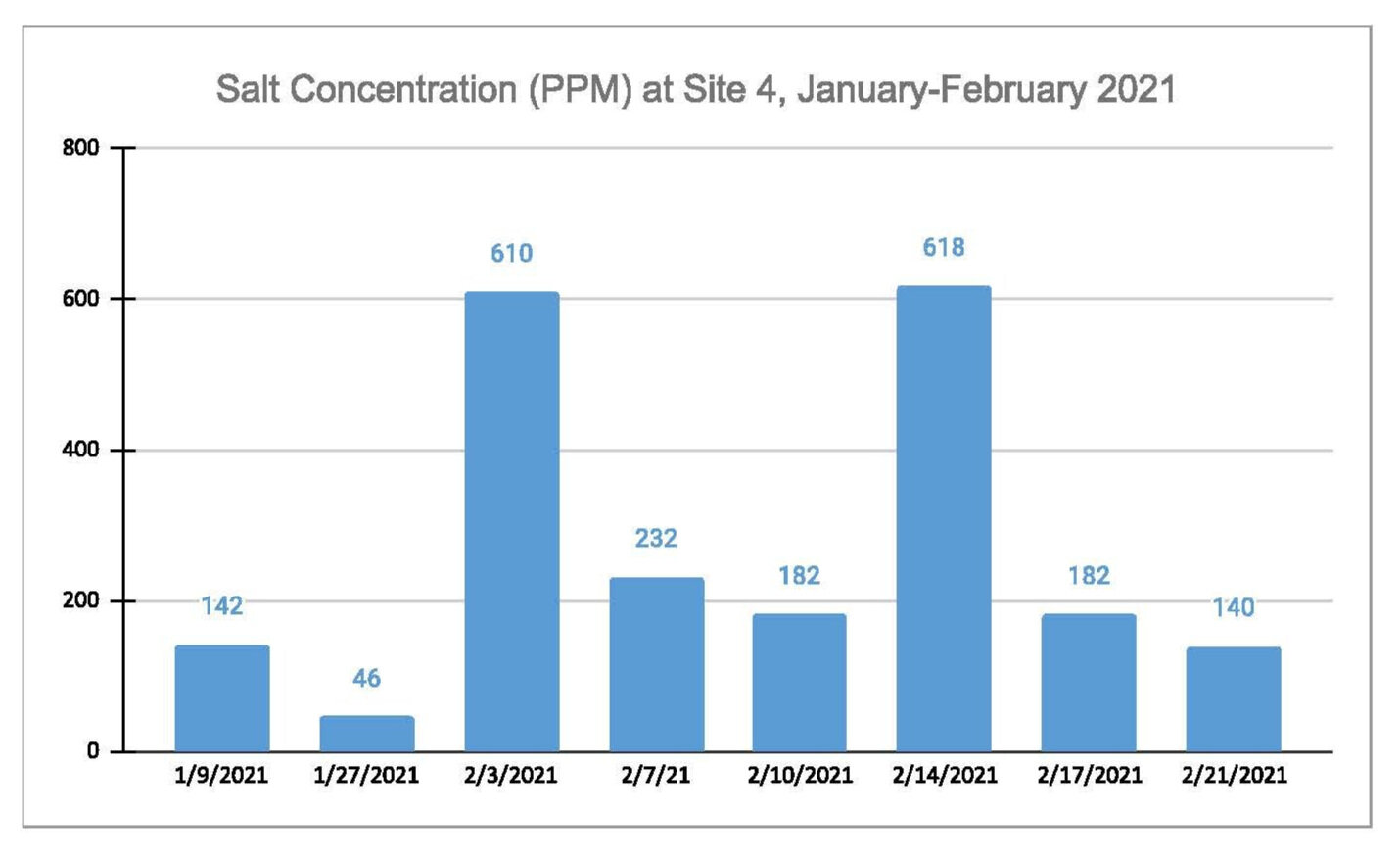The first step in installing permeable pavers is to create a gravel reservoir to capture the rain water. The pavers will cover the reservoir and rain water will pass through the spaces to be stored in the gravel until it can soak into the ground.
Overlook Community Pool in Bethesda is getting a new look and stormwater management. Work has started on replacing 1,300 square feet of asphalt with permeable pavers so that the rain water can soak into the ground instead of running off the parking lot into the Little Falls creek.
In 2021, LFWA was pleased to received Montgomery County Watershed Restoration and Outreach Program Grant to tackle the problem of stormwater run-off at the Overlook Community Pool. Working with the Overlook Homeowners Association (OHA), the parking lot will be retrofitted so that it can capture stormwater instead of sending it to the creek.
Problem: Too much runoff
Rain water was running off the Overlook pool parking lot into the storm drain system causing down hill flooding and sending toxic chemicals, trash and other pollution directly to the Little Falls creek. The volume and velocity of the storm water run-off is also causing serious erosion on the creek banks. The resulting silting in the Little Falls creek endangers the small creatures who make their homes under and on the rocks at the floor of the creek, making the Little Falls Branch one of the most impaired streams in the County.
Solution: Install Permeable Pavement!
Areas for pavers are shown in green. The pavers were placed on the south end of the lot so that the tree roots would not be disturbed.
Based on the findings and recommendations of a 2017 stormwater management study for the Overlook community done by the Center for Watershed Protection, we worked with the Overlook HOA to determine how to best prevent rain water from escaping from the 9,000 square foot parking lot. The lot is lightly used by pool goers, but is used as a play space by community residents and for community gatherings. There is also a huge willow oak tree at one end whose roots run under the pavement. After a series of community discussions and a survey of community use, it was decided to install permeable pavement to replace some of the asphalt. Permeable pavement are hard surfaces that are designed to allow rain water to soak into the ground while still supporting cars and other vehicles. The parking lot could still be used as a play/gathering area and the pavers would be located along the east and west sides of the lot, avoiding the end with the oak tree so its roots would not be disturbed.
While there are many different types of pervious pavement, interlocking permeable pavers were selected for Overlook based on their price, ease of maintenance, and appearance.
How do Pavers Work?
Permeable pavers are concrete paving blocks that rest on top of an 18-inch deep specially prepared reservoir. The reservoir is filled with layers of different sized gravel. When it rains, the water runs through the spaces between the blocks and is stored in the reservoir until it can soak into the ground. This way, not only is the water prevented from flowing into the storm drain system to the creek, but the chemicals and other pollution are filtered out by the gravel and cleaned up naturally by the soil. This infiltration technique also recharges the ground water replenishing the natural aquifers that our waterways depend on for clean water.
faqs
Can the pavers support rescue vehicles and other heavy trucks? Yes - the pavers are being installed at Overlook are rated for commercial vehicles. That was an important requirement for the contract. They can support long term parking too. In fact, in many places permeable pavers are used specifically for parking areas to distinguish the parking spaces from the road.
Are the pavers handicapped friendly? Yes, the pavers are 100% ADA compliant. The surface should not present any problem.
Do the pavers need any special maintenance? Yes, but not that much! The spaces between the blocks must be blown out from time to time so that they do not become clogged. These spaces are critical to the function of the system and if they are blocked, the water cannot soak into the reservoir. Further, snow from plowing and leaves cannot be stored on the pavers. Again, anything that could cause the pavers to clog should be avoided.
Is there a residential use for pavers? Yes, permeable pavers are perfect for stormwater management on residential properties and can be used for driveways, walkways and patios. Use them to prevent flooding in your own yard, or prevent water from flowing into your basement. Visit https://www.lfwa.org/pervious-pavers to learn about area rebate programs.
The project is made possible by funding from the Montgomery County Water Quality Protection Fund.
















